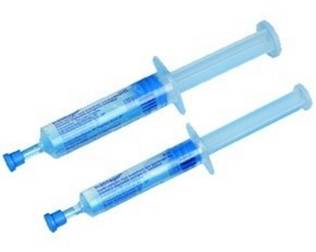Use of lubricants for male and female catheterization
There is clear consensus that a lubricant should be used for both male and female urinary catheterisation (NICE 2012), but this is another area of practice which requires further research to inform clinical decision making.
Task 2
There is a general consensus that sterile, anaesthetic based gel, is used for male catheterisation, with most Trusts now using Instillagel(r).
There have been a number of different practices in relation to female urethral catheterisation over the years and still a wide variation in practice today.
Task 3
2 |
|
Task 4
3 |
|

Figure 4: Instillagel 11ml and 6ml.
(CliniMed)
More recently a debate has begun regarding whether a local anaesthetic based gel is needed or whether a plain gel is sufficient for catheterisation, given the evidence supporting the use of plain gels for flexible cystoscopy (Kyle, 2009). You must ensure you follow local Trust guidance.
Task 5
4 |
|
